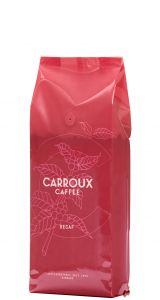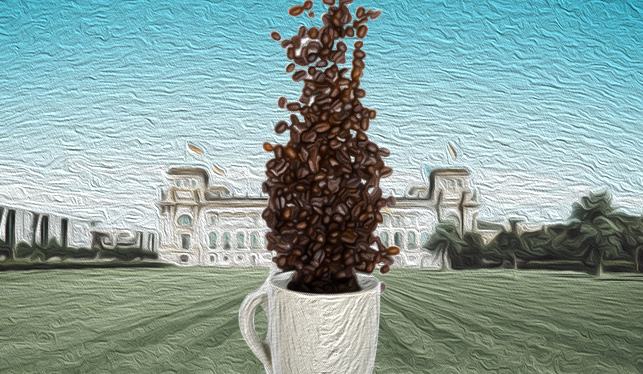
5-7 Workdays Article No. 1307
Aroma(s) : Nutty, Fruity
Article No. 1307

5-7 Workdays Article No. 1753
Aroma(s) : Nutty, Floral
Article No. 1753

5-7 Workdays Article No. 1138
Aroma(s) : Chocolaty, Nutty
Article No. 1138

5-7 Workdays Article No. 10675
Aroma(s) : Floral, Fruity
Article No. 10675

5-7 Workdays Article No. 10676
Aroma(s) : Floral, Fruity
Article No. 10676

5-7 Workdays Article No. 10371
Article No. 10371

5-7 Workdays Article No. 10342
Aroma(s) : Nutty
Article No. 10342

5-7 Workdays Article No. 10341
Aroma(s) : Chocolaty
Article No. 10341

5-7 Workdays Article No. 10269
Aroma(s) : Malty, Floral
Article No. 10269

5-7 Workdays Article No. 10268
Aroma(s) : Malty, Floral
Article No. 10268

5-7 Workdays Article No. 10246
Aroma(s) : Chocolaty, Floral
Article No. 10246

5-7 Workdays Article No. 10245
Aroma(s) : Chocolaty, Floral
Article No. 10245

5-7 Workdays Article No. 10244
Aroma(s) : Chocolaty, Malty
Article No. 10244

5-7 Workdays Article No. 10243
Aroma(s) : Chocolaty, Malty
Article No. 10243

5-7 Workdays Article No. 10232
Aroma(s) : Malty, Fruity
Article No. 10232

5-7 Workdays Article No. 10213
Aroma(s) : Nutty, Malty
Article No. 10213

5-7 Workdays Article No. 10211
Aroma(s) : Chocolaty, Nutty
Article No. 10211

5-7 Workdays Article No. 10206
Aroma(s) : Chocolaty, Floral
Article No. 10206

5-7 Workdays Article No. 10126
Aroma(s) : Floral, Fruity
Article No. 10126

5-7 Workdays Article No. 10134
Aroma(s) : Nutty, Malty
Article No. 10134

5-7 Workdays Article No. 10133
Aroma(s) : Chocolaty, Nutty
Article No. 10133

5-7 Workdays Article No. 10132
Aroma(s) : Chocolaty, Nutty
Article No. 10132

5-7 Workdays Article No. 10130
Aroma(s) : Chocolaty, Floral
Article No. 10130

5-7 Workdays Article No. 10043
Aroma(s) : Chocolaty, Fruity
Article No. 10043

5-7 Workdays Article No. 1140
Aroma(s) : Chocolaty, Malty
Article No. 1140

5-7 Workdays Article No. 1437
Aroma(s) : Chocolaty, Floral
Article No. 1437

5-7 Workdays Article No. 1571
Aroma(s) : Floral, Fruity
Article No. 1571

5-7 Workdays Article No. 1141
Aroma(s) : Nutty, Malty
Article No. 1141

5-7 Workdays Article No. 1139
Aroma(s) : Chocolaty, Nutty
Article No. 1139

5-7 Workdays Article No. 1409
Aroma(s) : Nutty, Malty
Article No. 1409

5-7 Workdays Article No. 1140a
Aroma(s) : Chocolaty, Malty
Article No. 1140a

5-7 Workdays Article No. 1572
Aroma(s) : Floral, Fruity
Article No. 1572

5-7 Workdays Article No. 1018
Aroma(s) : Chocolaty, Floral
Article No. 1018

5-7 Workdays Article No. 1099
Aroma(s) : Malty, Fruity
Article No. 1099

5-7 Workdays Article No. 1448
Aroma(s) : Nutty, Floral
Article No. 1448

5-7 Workdays Article No. 1105
Aroma(s) : Chocolaty, Nutty, Floral
Article No. 1105
German coffee: a world champion
The German coffee is rapidly invading a traditionalist market like that of coffee. It is not a surprise, since they have always been great admirers and innovators of the original recipe, the Germans confirm themselves as the leading coffee drinkers in the world.
Coffee consumption in Germany even exceeds that of the United States and Italy, second and third respectively in the rankings.
One can object about the qualities and differences that this drink has compared to the traditional recipe, but today if we have so many interesting and tasty recipes, then we must thank the passion and creativity of German coffee drinkers.
Coffee, for the Germans, is one of the moments around which the whole day revolves. Excellent as a break, as a dessert, as an accompaniment. Some activities leave a smile on your face, but they are the result of the different culture that interprets the drink as something less traditional and more creative.
Some of these recipes are truly mouth-watering and can really find a place on the tables of any kitchen. Cream, spirits, cocoa, cream, are just some of the ingredients that participate in the disguise of German coffee in a dessert that knows how to amaze guests, delight the palates and give intimate moments of gluttony.
How to make a real Berliner coffee!
Sweet, sophisticated and creative. Coffee made according to a German recipe begins to conquer from the first glance. There are several typical recipes, easy, original and quick to prepare, excellent to leave your guests amazed.
The Pharisäer Kaffee
Literally “The Pharisee's coffee”. A nickname that originates from the myth surrounding its invention. It is a coffee corrected with Rum and garnished with whipped cream and a sprinkling of cocoa. It is precisely to Rum that it owes its strange name: in fact, it is said that in a village in North Frisia, there was a particularly "bigot" preacher who did not approve alcohol at all. During a party, to disguise the Rum, the citizens came up with a trick: they mixed alcohol with their coffee and covered it with cream to prevent its scent from spreading. The drink intended for the preacher, of course, consisted only of coffee and whipped cream. Did it work? Not really. The name of the coffee in fact derives from the exclamation of anger and amazement when the "disguise" was discovered by the priest, who said "Oh, you Pharisees!"
In short, Pharisäer Kaffee is a perfect alternative to hot chocolate or a winter drink, but it can also be consumed cold.
The classic recipe includes:
- A large cup with at least 80 ml of drink (i.e. 3 normal espresso or a two-person coffee maker), cold or hot
- 40 ml of Rum • Sugar, 2 teaspoons per cup
- Whipped cream to taste
- Cocoa powder
The preparation is immediate and simple: pour the hot coffee and sweeten to taste. Add the rum, then cream and cocoa as soon as the drink has reached the desired temperature. I recommend, the cream will not survive long in hot coffee, so serve and drink immediately!
Eiskaffee: the coffee you already loved without knowing it!
Coffee and ice cream, a winning combination that everyone knows and tasted at least once in their life. The Eiskaffee (literally “iced coffee”) is simple and delicious and requires no big presentation.
There are many variations, limited only by the creativity of the drinkers, however here we want to talk about the classic recipe, made in Germany.
To get your iced coffee you will need:
- 80 ml of cold coffee or room temperature
- A tall glass tumbler
- Vanilla flavored ice cream
- Cocoa, whipped cream and biscuits in preference
There is almost no need to explain the recipe. All you have to do is wait for the coffee to reach the ideal temperature, then pour it over the ice cream in the glass and finally just garnish with cream, biscuits and cocoa. Be careful not to make the most common mistake and not to wait for the coffee to cool down or you will get a coffee ice-cream pie. The order is also important: the coffee must be poured over the ice cream to facilitate the union of ingredients and flavors.
These are two of the most typical and classic recipes. Obviously, they are very open to variations: Sambuca instead of Rum, hazelnut ice cream instead of vanilla, the imagination runs wild.
The constant is always the taste: sweet, tasty, savory, imaginative. Perfect for winter afternoons as well as for a fresh and creative apéritif on a warm summer evening. There is always a perfect opportunity to try a coffee a little different from the classic Italian espresso.
But how is German coffee like?
Germans are not only big consumers of coffee, but also big producers. There are numerous local brands specialized in the art of roasting. Each of these has its own philosophy and prepares a unique (German) coffee, which tries to perfectly follow the rules of tradition and respect for the supply chain and the final product.
There are many, so it is right to name those that are the most used and appreciated, without forgetting, however, that they are large-scale products, on an industrial level.
Jacobs coffee
Jacobs is one of the oldest and most well established producers on the German and European market. In practice, not a small roasting company, but a large company. The smooth flavor and low intensity of taste of the coffee that is distilled from these blends may not be ideal for lovers of tight and strong espresso. Rather, it is used for the preparation of a long coffee, preferable in moments of relaxation or for those who really do not like strong flavors. Tiramisu, Eiskaffee, Pharisäer Kaffee, are some of the recipes that can be obtained with Jacobs coffee.
Dallmayr coffee
Dallmayr coffee boasts a very ancient history. In fact, it has more than 300 years of history. It is a large company with 3,500 employees worldwide and roasts 57,000 tons of coffee per year. It is very close to the tastes of Italian roasting, which is religiously inspired.
Dallmayr coffee is more expensive than the other coffees found on supermarket shelves, but all in all it can be said to be good value for money.
It is usually chosen by those who wish to try a different, international coffee, but who are looking for a familiarity, in consistency and preparation at the same time.
Dallmayr, like all the giants of coffee, also offers a decent selection of capsules, designed for those who want to try a new coffee but do not want to give up the convenience of the machine.
Tchibo coffee
Tchibo was born after the war from the idea of two German merchants to send coffee beans by post! Incredible, but it worked very well. Today Tchibo is an established reality, its range imitates the qualities and recipes of coffee produced according to the Italian rule but with a strong accent of German creativity.
Tchibo offers everything from ground coffee that competes with local blends, to pods that allow you to enjoy the flavor of long, German-made coffee. There is a lot of variety and the quality of the final product is equal to that of Dallmayr and Jacobs Coffee.
German niche coffees
Of course, German coffee is not only represented by the big brands. There are many small roasting companies that make a difference with their craftsmanship and meticulous attention to all the details of the complex process of selecting, processing and roasting the coffee beans.
They are companies as small as they are full of value, which rely on experience and passion to create truly special and particular coffee blends, impossible to find on the shelves of a supermarket.
This is the case of the roasters we offer you in this section: Andraschko, Elbgold, Carroux, Speicherstadt, Public Coffee Roasters, Zombie Kaffee, to name but a few. Coffee artisans, for whom it is not a simple drink, but an important part of our everyday life, a ritual, a pampering, a cuddle, which to be such, cannot be a random product, but must be taken care of in the details in all respects.
To conclude: what is expected from German coffee?
Long and light or narrow and strong. There is no single recipe, but a very varied set of flavours, aromas and textures, which have come together to form a broad coffee culture. From this, comes the obsession that makes the Germans the greatest coffee appreciators in the world.
If you have come this far, then why not try one of the classic and delicious recipes that we have proposed to you? And then, if you like the idea, there is always a choice of original coffees, imported from Germany, ready for those who want to try new tastes and experiment.
Because coffee is not just coffee: it is fun, culture, play and company.


